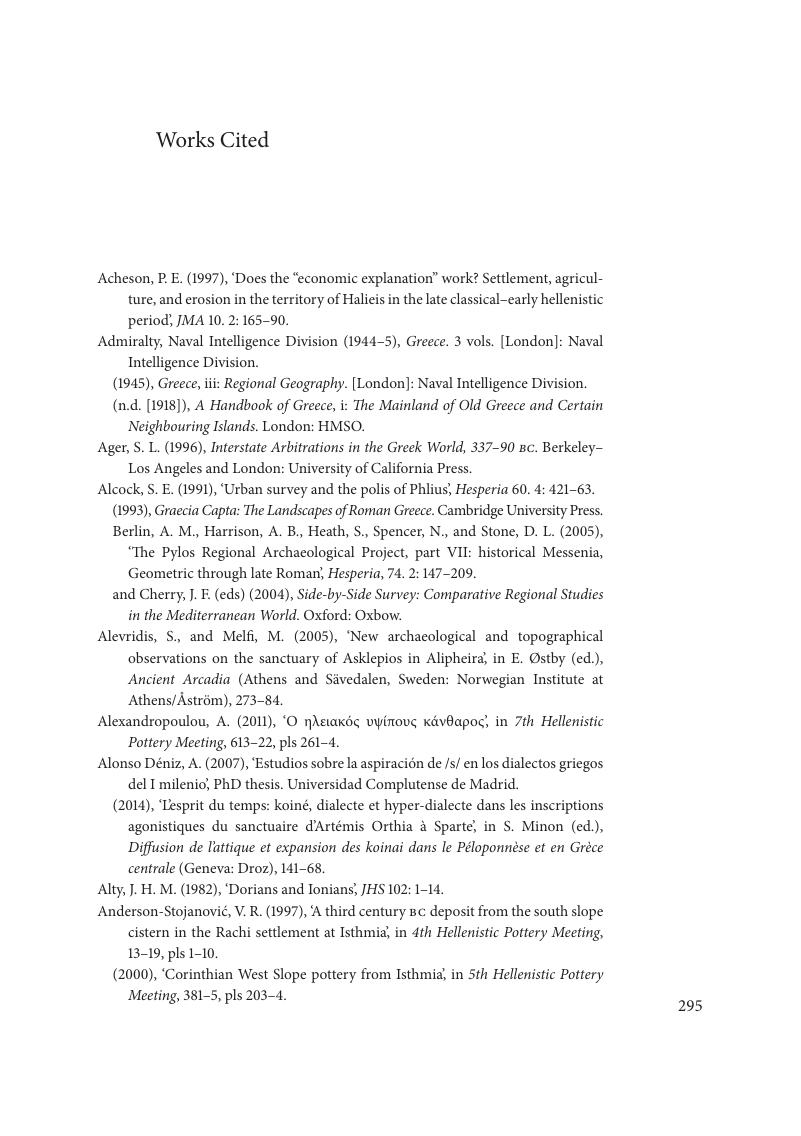Book contents
- The Early Hellenistic Peloponnese
- The Early Hellenistic Peloponnese
- Copyright page
- Dedication
- Contents
- Figures, Tables and Maps
- Maps
- Preface and Acknowledgements
- Note on Dates
- Note on Spellings
- Special Abbreviations
- I The Acropolis of Greece
- II Warfare and Control
- III Power and Politics
- IV Economies and Landscapes
- V Region, Network, and Polis
- Works Cited
- Index locorum
- General index
- References
Works Cited
Published online by Cambridge University Press: 30 May 2018
- The Early Hellenistic Peloponnese
- The Early Hellenistic Peloponnese
- Copyright page
- Dedication
- Contents
- Figures, Tables and Maps
- Maps
- Preface and Acknowledgements
- Note on Dates
- Note on Spellings
- Special Abbreviations
- I The Acropolis of Greece
- II Warfare and Control
- III Power and Politics
- IV Economies and Landscapes
- V Region, Network, and Polis
- Works Cited
- Index locorum
- General index
- References
Summary

- Type
- Chapter
- Information
- The Early Hellenistic PeloponnesePolitics, Economies, and Networks 338–197 BC, pp. 295 - 338Publisher: Cambridge University PressPrint publication year: 2018



